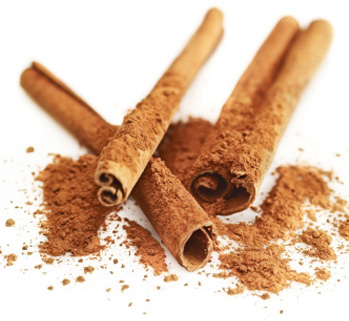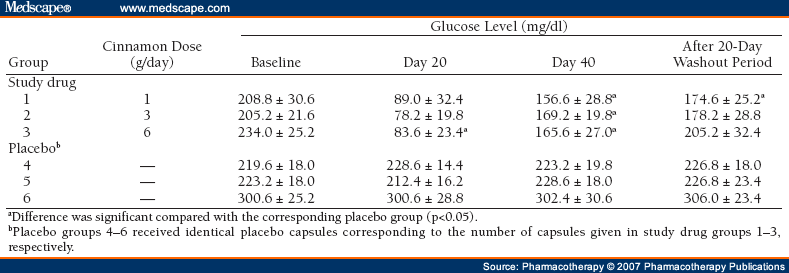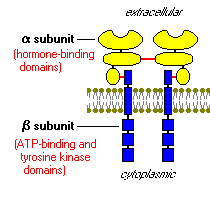Enrica Abrigo
Marco Gregnanin
Cinnamon ally of diabetic

Description
Cinnamon is a spice obtained from the inner bark of several Cinnamomum Lauraceae,genus trees native to South East Asia. It is obtained from the rolled tree's cortex after a drying procession and, due to its strong flavour, it is often chosen to vary the taste of both sweet and sauvory foods. Cinnamon is one of the oldest spices known. It was mentioned in the Bible and was used in ancient Egypt not only as a beverage flavoring and medicine, but also as an embalming agent. It was so highly treasured that it was considered more precious than gold. Around this time, cinnamon also received much attention in China, which is reflected in its mention in one of the earliest books on Chinese botanical medicine, dated around 2,700 B.C. Cinnamon's popularity continued throughout history. It became one of the most relied upon spices in Medieval Europe. Due to its demand, cinnamon became one of the first commodities traded regularly between the Near East and Europe.
Ceylon cinnamon is produced in Sri Lanka, India, Madagascar, Brazil and the Caribbean, while Cassia is mainly produced in China, Vietnam and Indonesia.
Studies
- Dott.Richard Anderson, an American researcher from the Department of agriculture's human nutrition research center of Beltsville (Maryland), discovered a connection between cinnamon and diabetes type II.
Type 2 diabetes is a lifelong disease caused by high levels of sugar in the blood due to insulin resistance and failure of pancreatic β-cells to produce insulin in response to increasing of glucose levels. The discovery- published on “Diabetes Care”- was achieved in a casual way:Dott. Anderson noticed that the typical American apple pie,in which the cinnamon is a fundamental ingredient, didn't increase the glucose rate in diabetic patients, as expected.
- Dott.Alam Khan, a Pakistan doctor, has confirmed the theory. He studied the effect of cinnamon doses on blood serum glucose in type 2 diabetic individuals for 60 days. Sixty type 2 diabetic individuals of both sexes and of age 48±6.5 years were divided into 6 groups;each group was having 10 individuals.
- Groups 1, 2 and 3 were assigned for 1g, 3g and 6g cinnamon doses/day respectively.
- Groups 4, 5 and 6 were assigned for 1g, 3g and 6g placebo doses/day respectively.
The doses were equally distributed over the day. Cinnamon and placebo were given in the form of capsules with breakfast, lunch and dinner. Fasting blood samples were taken on days 0 (starting day of the experiment) 20, 40 and 60 and blood serums were separated. The blood serum glucose of both the cinnamon and placebo groups were determined. The cinnamon doses significantly reduced the mean fasting serum glucose levels while the placebo doses did not affect the serum glucose levels.

Effect of Cinnamon on Blood Glucose in Diabetic Individuals,2004
Diabetes complication: AGEs
Hyperglycemia is still considered the principal cause of diabetes complications. Its deleterious effects mainly derive from the formation of sugar-derived substances called "advanced glycation end products" (AGEs).
AGEs are a heterogeneous groups of molecules resulting from the nonenzymatic reaction between glucose and proteins, known as the "Maillard" or "browning" reaction.This reaction begins when sugar carbonyl groups and protein amino groups combine, forming Schiff bases. These unstable combinations quickly rearrange into somewhat more stable substances called Amadori products. On long-lived proteins that are not normally recycled within the body for months or years, problems can develop when some of the Amadori products dehydrate. They then rearrange themselves forming A.G.E.s and eventually mediate the cross-linking of proteins. AGEs' production occurs at constant slow speed in healthy people, starting in early embryonic development, and accumulates with time.
However, their formation is markedly accelerated in diabetic patients because of the increased availability of glucose. A typical feature of some reactive or precursor AGEs is their attitude to develop covalent bonds with proteins (cellular matrix, basement membranes, vessel-wall components), which alter their structure and function.
Several studies suggest that AGEs are important pathogenetic mediators of almost all diabetes complications, conventionally grouped into micro- or macroangiopathies. For example, AGEs are found in diabetic patients' retinal vessels and the amount of these groups is correlated with the one in serum as well as with the severity of retinopathy.Atherosclerosis is significantly accelerated in diabetic patients and is associated with greater risk of cardiovascular and cerebrovascular mortality. Animal and human studies have shown that
AGEs play a significant role in the formation and progression of atherosclerotic lesions. Increased AGE accumulation in the diabetic vascular tissues has been associated with changes in endothelial cell, macrophage, and smooth muscle cell function.
In addition, AGEs can modify LDL cholesterol in such a way that it tends to become easily oxidized and deposited within vessel walls, causing streak formation and, in time, atheroma. AGE-crosslink formation results in arterial stiffening with loss of elasticity of large vessels.
Glucose, Advanced Glycation End Products, and Diabetes Complications: What Is New and What Works,2003
Cinnamon effects
Cinnamon is reported to be effective in the alleviation of diabetes thanks to its antioxidant and insulin-potentiating activities.
- First of all cinnamon mimics the action of insulin, enhancing the admission and the use of glucose into cells through the stimulation of insulin receptors.
The insulin receptor is a tyrosine kinasi (tetramers Alpha2-Beta2) which catalyzes its autophosphorylation ( cytosolic side).
In other words, it functions as an enzyme that transfers phosphate groups from ATP to tyrosine residues on intracellular target proteins. Binding of insulin to the alpha subunits causes the beta subunits to phosphorylate themselves (autophosphorylation), thus activating the catalytic activity of the receptor. The activated receptor then phosphorylates a number of intracellular proteins, which in turn alters their activity, thereby generating a biological response.

- Secondly cinnamon effect against diabetes is due to several phenolic compounds, such as catechin, epicatechin, and phenol polymers like methylhydroxychalcone which were identified from the subfractions of aqueous cinnamon extract. These compounds showed significant inhibitory effects against the formation of AGEs.
The most frequent AGEs found in the blood of diabetic patients is glycosylated hemoglobin identified as HbA1c (clinically more commonly reported A1c level). Multiple trials in the past have shown conflicting results of whether cinnamon lowers glucose or HbA1C. The purpose of an important study was to determine whether cinnamon lowers HbA1C in patients with type 2 diabetes. It was performed a randomized, controlled trial to evaluate whether daily cinnamon plus usual care versus usual care alone lowers HbA1c. The method of this study was to randomized 109 type 2 diabetics (HbA1C >7.0) from 3 primary care clinics caring for pediatric, adult, and geriatric patients at a United States military base. Participants were randomly allocated to either usual care with management changes by their primary care physician or usual care with management changes plus cinnamon capsules, 1g daily for 90 days. HbA1c was drawn at baseline and 90 days and compared with intention-to-treat analysis. This study was approved by an institutional review board. The Results confirmed that Cinnamon lowered HbA1C 0.83% compared with usual care alone lowering HbA1C 0.37%. So the conclusions confirmed that taking cinnamon could be useful for lowering serum HbA1C in type 2 diabetics with HbA1C >7.0 in addition to usual care.
The antiglycation activities of catechin, epicatechin, procyanidin B2, and phenol polymers are connected to their antioxidant properties : in fact they can quench free radicals because of their acidity (protons' donor) and their ability to transfer electrons while maintaining stability thanks to the presence of benzene rings.
Moreover these molecules can trap reactive carbonyl species such as methylglyoxal (MGO), an intermediate reactive carbonyl of AGE formation.
Effectiveness of Cinnamon for Lowering Hemoglobin A1C in Patients with Type 2 Diabetes: A Randomized, Controlled Trial,2009
- The role of methylhydroxychalcone:

The MHCP acts as an insulin mimetic, most likely by triggering the same cascade as the insulin signaling pathway. Infact the MHCP acts as an insulin potentiating agent. In both the glucose uptake assay and the glycogen production analysis, treatment with insulin and MHCP, resulted in a synergistic effect.
- MHCP stimulated the autophosphorylation of the insulin receptor, inducing the phosphorylation of target proteins-receptors for glucose: GLUT-4.
- After determining that MHCP induced both glucose uptake and glycogen synthesis, it was of interest to evaluate the role of PI-3-K in this process. PI-3-K is involved in both the upregulation of glucose uptake and glycogen production upon insulin stimulation. Various experiments show that PI-3-K is triggered upon MHCP treatment and that this PI-3-K is involved in the strong synergistic response observed when both MHCP and insulin were used.
- In the enzymatic pathway stimulating glycogen production, GS activity is downregulated by phosphorylation by GSK-3β . It was of interest to determine whether GSK-3β was affected by MHCP treatment and whether an effect on this enzyme might account for the potentiation effects observed in glycogen production. Treatment of adipocytes with MHCP resulted in an inhibition of GSK-3β activity at a level greater than the inhibition by insulin treatment


A Hydroxychalcone Derived from Cinnamon Functions as a Mimetic for Insulin in 3T3-L1 Adipocytes,2001
- One additional bioactive compound of cinnamon is cinnamaldehyde, CND (chemical name is 3-phenyl-2-propenal).

Cinnamaldehyde is the organic compound that gives cinnamon its flavor and odor.This molecule consists of a phenyl group linked to an unsaturated aldehyde.Most cinnamaldehyde is excreted in urine as cinnamic acid, an oxidized form of cinnamaldehyde.
- Experimental animal models of diabets showed that CND has beneficial effects in the treatment of the disease. In fact oral administration of 20 milligrams per body weight kgram (mg/kgbw) of Cinnamaldehyde to diabetic rats for 2 months led to significant improvement in muscle and hepatic glycogen content. Cinnamaldehyde a potential antidiabetic agent,2007
- After In vitro incubation of pancreatic islets with CND, the insulin release was higher if compared to the effect of glibenclamide, which belongs to the class of the diabetes' drugs, Sulfonylureas, the generic name of Glyburide. In the pancreatic tissue, glibenclamide causes degranulation of the beta cells; at a peripheral level it increases tissue sensitivity to insulin, probably due to a growth of the number of membrane receptors for insulin. Sulfonylureas bind to membrane receptors on the cell surface of the beta cells of the pancreas. Drug-receptor interaction causes a decrease in conductivity of a channel of K ATP-dependent, which leads, in turn, to the depolarization of the membrane. Cell membrane depolarization is accompanied by an increase of intracellular calcium level(calcium influx through voltage-gated channels) and of endogenous insulin. It is thought that sulfonylureas receptor could play the same role of K channel.
- The insulinotropic effect of CND increases glucose uptake through glucose transporter (GLUT4) translocation in peripheral tissue
- The use of CND also showed a significant improvement in altered enzyme, as pyruvate kinase (PK), and his mRNA expression levels.
La PK, involved in the last step of glycolisis, it's an important controller of the glucose methabolic rate.
Conclusion

While the research on cinnamon and its ability to lower blood sugar levels is fairly well established and accepted, there are some potential problems having to do with precisely which form of cinnamon is safe and effective to use.
- The main issue has to do with numerous oil-based compounds—as well as such water-soluble ones such as MHCP—found in cinnamon bark.
These oil compounds from the bark are known to be toxic when taken at high doses for long periods of time. Oils extracted from the cinnamon leaf are non-toxic.
Similarly, cinnamon powder has been shown to be safe, even when used often and regularly, with no shown toxicity or negative side effects. This is due, in large part, to the fact that cinnamon powder has much of the essential oils removed during processing.
- Another reason why high quantities of cinnamon aren’t recommended is that the most common type of cinnamon available in the United States is “cassia cinnamon”.
Cassia cinnamon is known to have high levels of a flavoring agent known as coumarin.
It’s this flavoring agent that accounts for the potential dangers of cinnamon.
Coumarin has the potential to cause liver damage in humans. It also has anti-coagulant properties and is a potential carcinogen.
In the light of this research, it is recommended that Type 2 diabetic individuals should use 1-3g cinnamon in their food preparations on regular basis.
They can use cinnamon shakers for sprinkling of cinnamon powder on the curry in the plate.
They can prepare cinnamon tea without sugar and can use it after meals.
Also they can chew cinnamon bark after meals.
This will keep their sugar level near to normal values.
The evaluation of long-term effects of cinnamon bark and olive leaf on toxicity induced by streptozotocin administration to rats,1999.